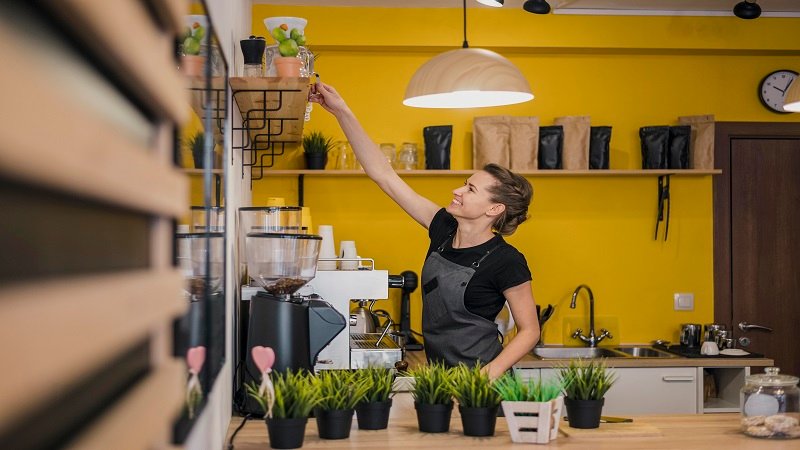Our eating patterns continue to evolve -more rapidly than ever. An educational interest in health, social media, and a resurgence of interest in the convenience factor have pushed small, snackable, and food-focused things to the forefront of the restaurant discourse. This paper will examine the emerging trend, as reflected in the search term ‘Jalbiteblog Food Trends Justalittlebite’: why bite-sized foods are becoming a trend, how chefs and amateur cooks are reacting, and what it all means to restaurants, food business owners, and everyday food enthusiasts.
The small-bite revolution: why less is more
Small food is not a new phenomenon. It satisfies several current demands simultaneously: convenience, diversity, portable meal, and Instagram-correct appearance. Individuals desire experiences, such as walking and tasting flights, where they will be able to taste several flavors at a time and not necessarily buy a full plate. A smaller size facilitates the sharing, making it is easier to match with drinks and design menus to meet the varying dietary habits. Less is more style also attracts people who eat small portions due to either health or financial reasons, and still have a gourmet taste.
Pictorials sell: social media and the emergence of snackable aesthetics
The social media such as Instagram, TikTok, and Pinterest prefer foods that can be viewed in one picture. Slices are also an easy food to capture: stacked sliders, mini tarts, dainty dumplings and skewered bites are visually appealing and immediately shareable. This trend of snackable aesthetics adds the reach of both restaurants and home cookers. Even the most basic of bites can achieve viral publicity, whether it be shining light on an unfamiliar ingredient or a spin on an old comfort dish.
Flavors enhanced: intense flavor, innovative blends
Loss of portions necessitates volume of flavor. Chefs and food developers are stuffing high-intensity flavor profiles in small containers. Imagine umami glazes on tiny ribs, bright citrus foams on tiny ceviches or terribly hot spiced chutneys, and tiny roasted vegetables. The size of servings can be experimented with: unlikely combinations (e.g., kimchi and chocolate on a mini canapé), international fusion (a mini taco with bulgogi, a Korean dish), and texture (crispy shells, creamy mousse, crunchy garnishes). The outcome is high-impact eating which is crunchy and memorable.
Affordability and accessibility
Small portions may reduce the obstacle to the consumption of new food items. The cost of a full entrée is one of the hurdles to many customers; a smaller bite is a cheaper point of entry. It helps adventurous eaters to more easily taste the foreign cuisines and restaurants to demonstrate the signature techniques or seasonal products without raising the price tags. In the case of food entrepreneurs, the availability of sampler packs or tasting trays is known to provide several price levels of prices and expand the target clientele.
Wellness, nutrition, and conscious eating

The bite-sized trend has a powerful driving force in portion control. Consumers are seeking more indulgent means to eat healthier foods in smaller portions, allowing room to balance. Multi-course experiences are easier to put together with bite-sized formats, and they make them feel indulgent but calorically reasonable. Mindful eating is also encouraged in this format: it is better to take time, enjoy the textures and layers of taste, and concentrate on quality more than on quantity.
Fine dining Street food: hybrid formats
The other trend that is highly anticipated in the Jalbiteblog Food Trends Justalittlebite arena is the marriage between street-food dynamism and fine-dining artistry. Historically, street vendors focus on dishes that can be consumed as snacks: skewers, mini pancakes, and dumplings; however, contemporary chefs are taking these ideas and taking them to the next level, using the finest products and serving them in fancy dishes with complicated sauces. The consumers will enjoy the advantages of the two worlds, a combination of the convenience and ease of street food and the exquisiteness of modern gastronomy.
Green decisions: fewer materials, smarter buying
Sustainability can be supported by bite-sized menus. Smaller portions also enable the kitchens to turn over seasonal foods more often, thereby avoiding the need to overstock. They also enable it to be possible to include more expensive products of ethically sourced origin (such as specialty fish or rare vegetables) in regulated amounts. Treating tasting menus with the care that restaurants deserve, they will be able to utilize whole ingredients in various forms, reducing food waste and advancing the cradle-to-plate philosophy.
At-home trends: Dining in boxes and parties
The mini-bite trend does not only happen in restaurants. Casual gatherings, Home cooks are adopting DIY tasting boxes and grazing platters. These homemade trends allow hosts to provide diversity without having to cook tirelessly – consider ready products, dips, and assembly. This demand is being tapped by brands and subscription services selling curated kits to enable the customer to hold professional-themed tasting parties at home. These kits are perfect when the celebration, date night, and small gatherings are involved because of their convenience and spectacle.
Technology and delivery: perfection in packaging
There are special issues in serving bite-sized food: it is difficult to present it, it is difficult to keep cool, and it is difficult not to be soggy. Creative packaging ideas multi-compartment boxes, breathable inserts, and smart stacking systems, can be used to maintain texture and appearance. Ghost kitchens and delivery-first brands are designing menus with a more specific focus on transport, meaning that the mini treats should arrive looking and tasting as intended. This is an important logistics concentration of the Jalbiteblog Food Trends Justalittlebite puzzle.
Small business and entrepreneurship opportunities

In the case of food startups, small dishes allow a startup to reduce the initial expenses and accelerate the time to market. Smaller units require smaller kitchens, reduced stocks of ingredients, and less complicated supply lines. New ideas will work best with pop-up shops, farmers’ markets, and event catering. Moreover, the shareability of small bites increases exposure on social media, which assists new brands in gaining momentum within a very short time without huge advertisement costs.
Challenges and balance: small bites just cannot cut it
The bite-sized trends have numerous advantages, but they are not a panacea. Portions can be too small or the price may not reflect perceived value to the discontent of customers. In operation, it can make the production of large quantities of small components more laborious and complex in the kitchen. The trick lies in the middle ground: the combination of high-quality products and strong cuisine with reasonable costs, and the structure of the menu that will provide the customer with something new yet satisfying.
Future anticipations: sustainability or tasting the rainbow?
The motivating factors behind the mini-bite trend, which include social sharing, need to have variety, healthy eating and sustainable sourcing, are not likely to disappear. The trend of small, shareable, and high-flavored dishes appears to be here to stay, although particular formats (such as a particular type of mini taco or dessert bite) may always rise and fall. The restaurants that make the most of creativity and, at the same time, retain good value will be the beneficiaries of it all; the home cooks who learn to be versatile and mindful about portioning will also be able to reap the gains of this trend.
Conclusion
The buzz recorded by Jalbiteblog Food Trends Justalittlebite is an ultimate culinary moment of the convergence of convenience, creativity, and conscious consumption. Bite-sized food allows individuals to sample widely, share easily, and capture the mind with imagery- all as it opens up the possibilities of chefs, entrepreneurs, and home hosts to experiment. It can be a tasting flight at a new bistro, a grazing board with friends, or a micro-food brand: the force of just a little bite is evident: small plates, big impact.
